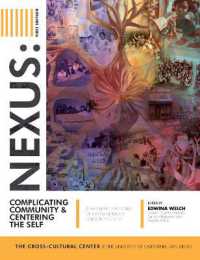- ホーム
- > 洋書
- > 英文書
- > Philosophy
Full Description
Protest is a critical part of the contemporary political landscape. Despite the prevalence of protest as a real-world practice, most liberal political theory limits its focus on protest to ideal conditions. This book takes up the question of how to think about protest, from within the context of liberal political theory, in the face of serious, substantial, ongoing, and actual injustices—in short, a theory of protest for our world. What can or must protest include? What, if anything, must it avoid? Against much of the popular discourse, the authors defend the view that suitably constrained violent political protest is sometimes justified. Violent political protest is not simply revolution by any other name—it's a last-ditch effort to remedy injustice without going to war.
Contents
Preface
1. A Brief (Philosophical) History of Protest and Liberalism
I. Common Liberal Categories of Resistance and Protest
II. Pressing the Liberal Tradition
III. Moving Forward: Reimagining Liberalism
2. Bottles and Bricks: Rethinking the Prohibition against Violent Protest
I. The Conceptual Argument
II. Moral Considerations
III. Pragmatic Considerations
3. (Re)Considering Violence
I. An Ordinary Conception of Violence
I.a. Subjectivity and Ideology
II. Challenging an Ordinary Conception
II.a. Violence as a Rights Violation
II.b. Structural Violence
II.c. Violence as a Violation of Integrity
III. Return to Milkshaking
4. Violence as Persuasive Political Communication
I. Progressing Towards Justice
II. A Commitment to the Political
III. Interpersonal Violence as Moral and Political Suasion
5. Responsibility and Accountability: Permission for Violent Protest
I. The Political Responsibility to Oppose Injustice
II. The Nature of the Political Responsibility to Protest
III. Evaluating P








